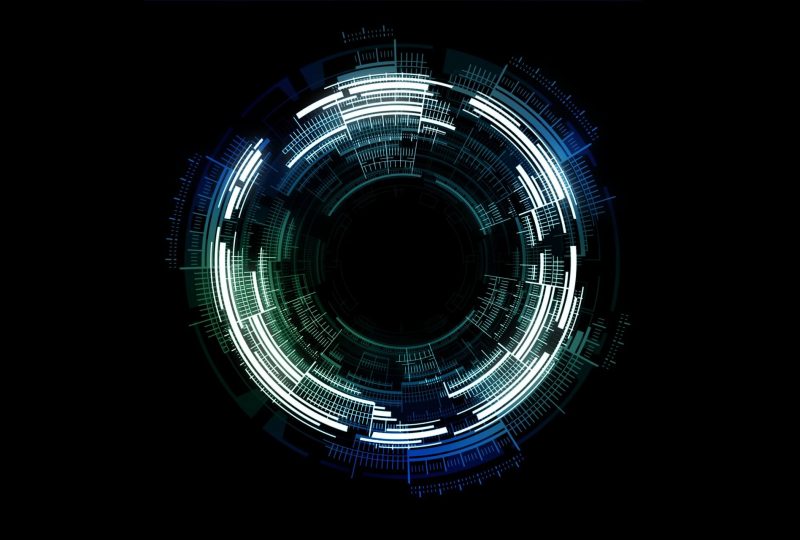New’s of the week selected by Impactscool – April 15th
15 April 2019 | Written by La redazione
The most important news about future and technology selected by Impactscool team

From insects’ eyes to the 3D print
Inspired by the eyes of insects, new materials with exceptional optical characteristics have been printed in 3D. Antennas capable of filtering certain electromagnetic frequencies, parabolic reflectors that absorb and transmit certain frequencies and many other applications for new 3D printed meta-materials developed by Tufts University. Drawing inspiration from the compound eyes of the moths it was possible to develop a hemispherical device capable of absorbing electromagnetic signals from every direction only in certain sequences. By exploiting complex geometric shapes, generated with a combination of 3D printing, micro-incisions and metallic coatings, repeated on a microscopic scale – lower than the wavelength of the various electromagnetic radiations that we want to use – it was possible to increase the capacities of the materials used previously decreasing its size. This technology could find applications in many fields in the future, such as more precise and compact sensors for medical diagnosis, telecommunication antennas and devices for optical measurements, such as portable spectrographs.
A delicate Italian hand for Robosimian
The JPL robot will be able to manipulate objects with greater delicacy, an essential skill in emergency situations. It’s called Robosimian, it looks like a spider or a gorilla, depending on whether it is in its quadruped or bipedal structure, it is a robot produced by the JPL, the Jet Propulsion Laboratory, to carry out operations in areas hit by catastrophes and by today he has an all-Italian hand that will allow him to manipulate objects with a delicacy never seen before in a car. The prototype was built by the Scuola Superiore Sant’Anna of Pisa and Jpl, with the collaboration of the Italian Institute of Technology and the Cà Foscari University of Venice. Through a fiber optic sensor “the robotic hand is able both to accurately detect dimensions and consistency of the materials touched – declared the first author of the research, Luca Massari – both to grasp fragile objects without breaking them or causing them to slip, and to adapt dynamically the position of robotic fingers during the manipulation of objects that change volume ”.
New features for focal, the smart glasses from North
Listen to music, manage notifications, get live directions and an automatic voice memo unblocking service in the new Focal smart lens update. Smart glasses gain new features. Thanks to a new update they will be able to allow the use of Spotify through the control loop called Loop. Thanks to augmented reality the glasses will provide directions, including distance, estimated time of arrival and possibly automatically share with their contacts a possible delay. The navigation system is automatically deactivated when the glasses perceive that the user is driving a vehicle, so as to avoid distractions. Finally, the most acclaimed feature, called “Rewind”, will allow smart glasses to record voice memos that will then be automatically transcribed and sent by email to the owner.
Streaming music is harmful to the environment
Streaming music services would be responsible for over 200 million kg of CO2 in the atmosphere per year. Without thinking it would be possible to say that streaming music is less impacting on the environment than the previous physical supports: vinyls, audiocassettes, CDs. Yet, according to a study by the University of Glasgow in collaboration with the University of Oslo, the amount of CO2 released into the atmosphere to manage and distribute music through various streaming services would be greater than the sum of greenhouse gases produced by vinyl production and CD. The study took into consideration the value of GHGs, or the quantity of greenhouse gases released into the atmosphere during the entire production and distribution process of an asset.
Flying cars? Sustainable on long journeys
A study has tried to understand if a flying vehicle can be sustainable from an environmental point of view. The flying cars are a bit the symbol of the future: movies, cartoons and other media have portrayed these vehicles in every sauce and, today that we are able to build them, the real question is whether VTOL (the acronym that describes them) stands for Vertical Take-off and Landing) are economically and environmentally sustainable. A research group from the University of Michigan tried to figure it out. The results showed that on routes of at least 100 km a VTOL has a much smaller impact than the classic combustion vehicles, on the other hand, on lower stretches the consumption of electricity becomes less efficient as the greater consumption occurs during takeoff and ‘landing. A sensible use of these types of vehicles therefore, according to the study, would be that of shuttles that go back and forth between medium-distance destinations or difficult to reach.
Discovered a new state of matter thanks to the IA
It’s liquid and solid at the same time, to discover it, researchers at the University of Edinburgh have exploited a particular type of Artificial Intelligence called the Neural Network. Take a full glass of water, normally you will find it in its liquid state. Cool it and it will become ice, the solid state. Warm it up and the water will evaporate, the gaseous state. Normally these are the states of matter that we encounter in our daily lives, but there are many others, such as plasma, Bose-Einstein condensates or degenerate matter. From today another state joins the family: it does not have a name yet but “it would be like a sponge full of water that starts to drip, but also the sponge is made of water,” says study co-author Andreas Hermann. To identify the unusual shape, potassium was used, then simulations were carried out through a neural network, a particular type of “machine learning” that allows us to predict a phenomenon by providing examples to the machine to learn from.





